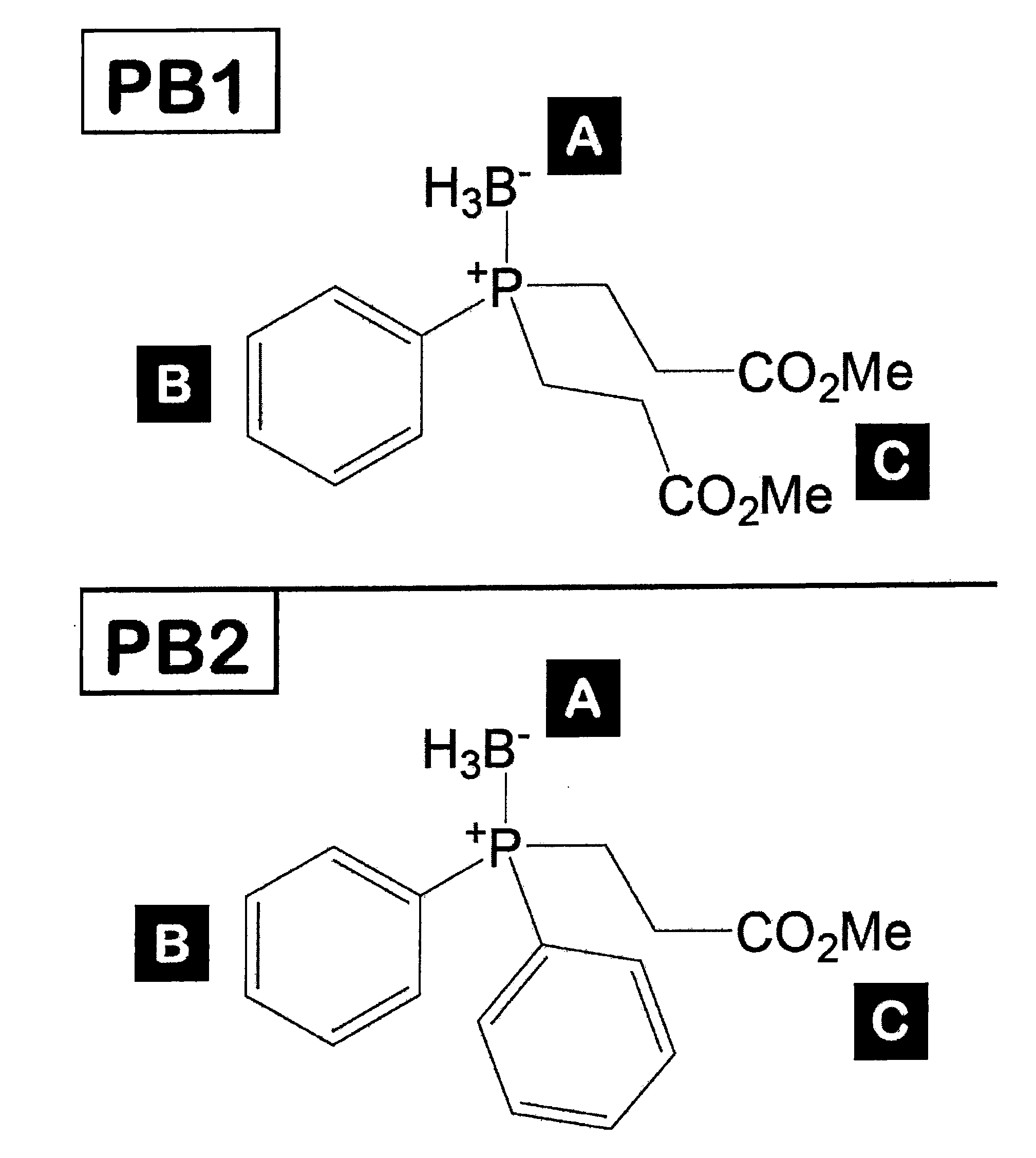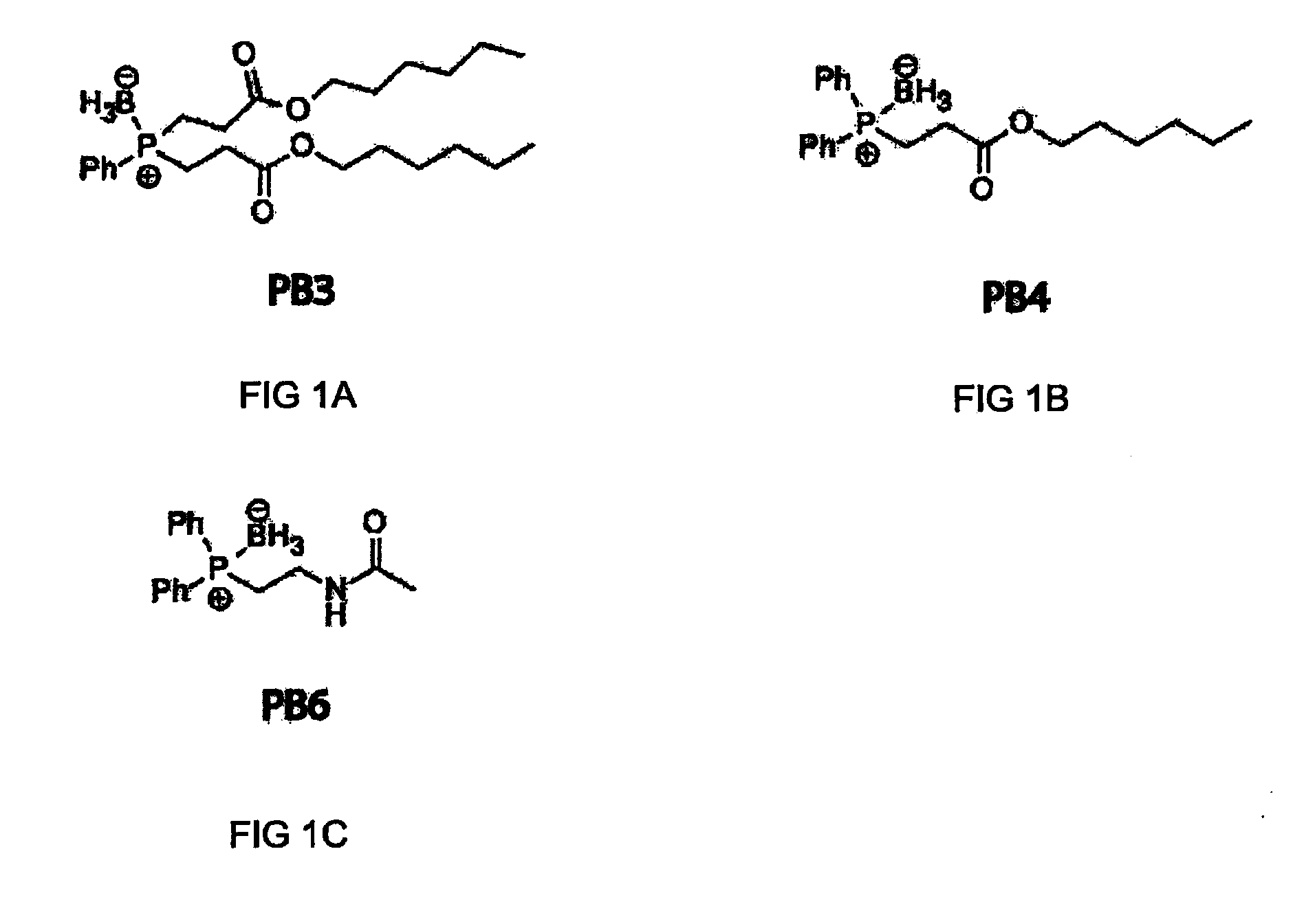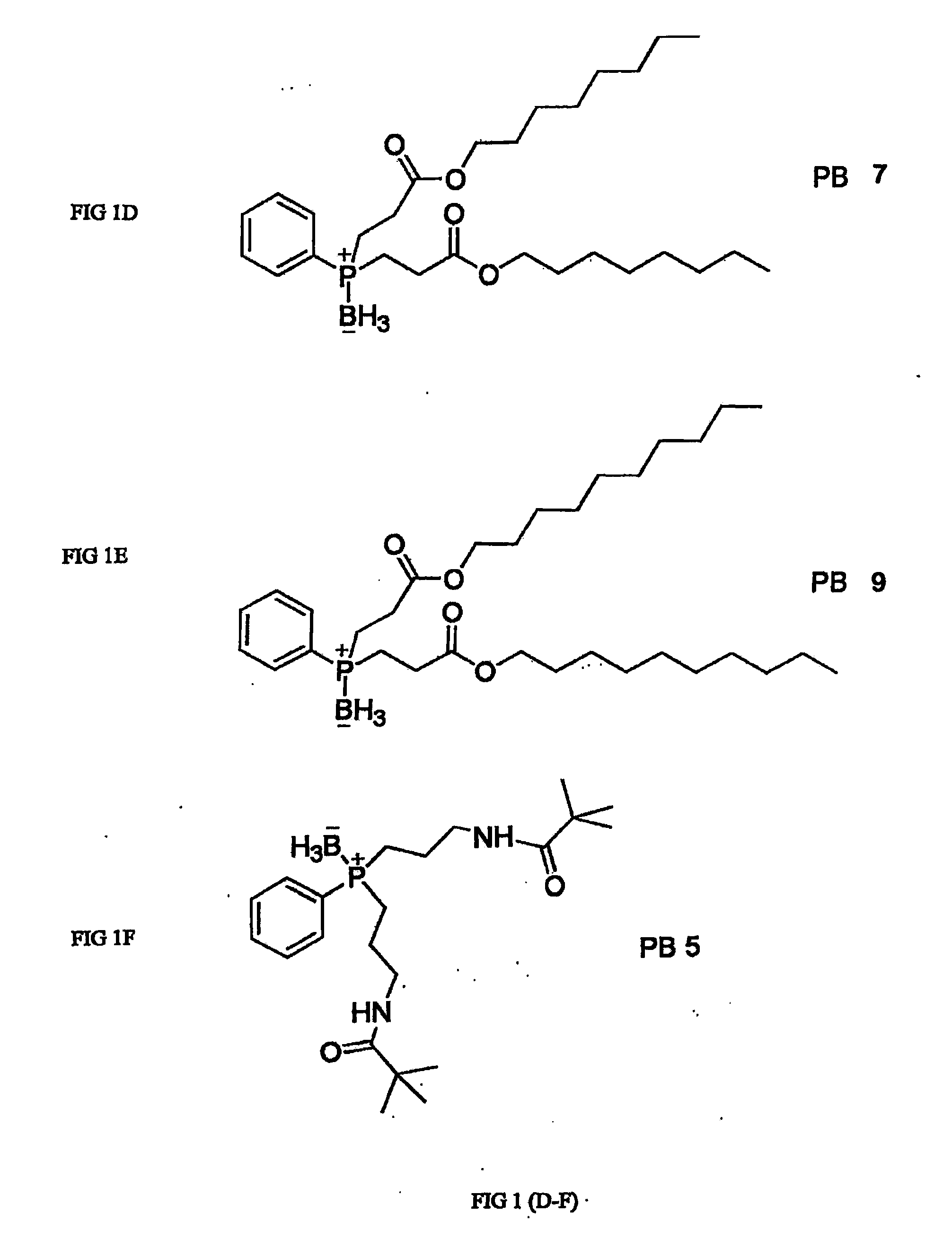Methods of and compositions for reducing cell death
a cell death and composition technology, applied in the field of cell death reduction methods and compositions, can solve the problems of limited radiomitigation, significant mortality and morbidity, etc., and achieve the effects of enhancing the survival and viability of the tissue used, protecting against or reducing oxidative damag
- Summary
- Abstract
- Description
- Claims
- Application Information
AI Technical Summary
Benefits of technology
Problems solved by technology
Method used
Image
Examples
example 1
Preventing RGC Menadione-Induced Cell Death In Vitro
[0055]Experimental Procedures
[0056]Synthesis of PB3, PB4, PB5, PB6, PB7, PB9: Borane-protected phosphines PB3, PB4, PB5, PB6, PB7, and PB9 (FIG. 1A-F) were designed for improved cell permeability and mitochondrial targeting. The long alkyl groups on PB3 and PB4 increase lipophilicity and thereby enhance the ability of PB3 and PB4 to cross cellular memberanes. PB3 and PB4 also have an enhanced ability to cross the blood brain barrier compared to related compounds. PB5 has two pivalamide side chains and has an increased corneal permeability and increased concentration within negatively charged mitochondria. PB6 becomes positively charged by intracellular amidase cleavage, which facilitates entry of PB6 into the negatively charged mitochondrion. PB7 has two octyl ester side chains and PB9 has two decyl ester side chains. Both PB7 and PB9 enter into cells, cross the blood-brain barrier, or cross the blood-retinal barrier better than PB...
example 2
Preventing Antimycine A-Induced Cell Death In Vitro
[0072]Experimental Procedures
[0073]Synthesis of PB1 and PB2: Chemicals and solvents were from Aldrich Chemical (Milwaukee, Wis.). Reactions were monitored by thin-layer chromatography and were visualized by ultraviolet light or staining with I2. NMR spectra were obtained with a Bruker AC-300 or Varian Inova-600 spectrometer. Phosphorus-31 NMR spectra were proton-decoupled and referenced against an external standard of deuterated phosphoric acid. Mass spectra were obtained with electrospray ionization (ESI) or matrix-assisted laser desorption / ionization (MALDI) techniques.
Synthesis of bis(3-propionic acid methyl ester)phenylphosphine borane complex (PB1) (FIG. 2)
[0074]Phosphine 1: See Rampal et al., J. Am. Chem. Soc. 103:2032-2036 (1981), incorporated herein by reference as if set forth in its entirety. Phenylphosphine (10 g, 90 mmol) was dissolved in acetonitrile (10 ml, degassed) in a flame-dried, round bottom flask under Ar(g). Po...
example 3
Preventing Radiation-Induced Death of Retinal Endothelial Cells In Vitro
[0085]Experimental Procedures
[0086]The borane-protected phosphines bis(3-propionic acid methyl ester)phenylphosphine borane complex (PB1) and (3-propionic acid methyl ester)diphenylphosphine borane complex (PB2) were synthesized as described in Example 2.
[0087]Cell Culture: Murine endothelial cells were isolated from Immortomice, which express a temperature-sensitive Simian virus 40 large T antigen, using sheep anti-rat Dynabeads coated with the rat anti-mouse PECAM-1 monoclonal antibody MEC13.3. The cells were grown at 33° C. with 5% CO2 on culture dishes coated with 1% gelatin, in DMEM with 20% FBS, 2 mM L-glutamine, 2 mM sodium pyrovate, 20 mM HEPES, 1% non-essential amino acids, 100 μg / mL streptomycin, 100 U / mL penicillin, heparin at 55 U / mL, endothelial growth supplement 100 μg / mL, and murine recombinant interferon-γ at 44 units / mL.
[0088]Irradiation and Viability Assays: The cells were plated onto 1% gelati...
PUM
| Property | Measurement | Unit |
|---|---|---|
| temperature | aaaaa | aaaaa |
| temperature | aaaaa | aaaaa |
| temperature | aaaaa | aaaaa |
Abstract
Description
Claims
Application Information
 Login to View More
Login to View More - R&D
- Intellectual Property
- Life Sciences
- Materials
- Tech Scout
- Unparalleled Data Quality
- Higher Quality Content
- 60% Fewer Hallucinations
Browse by: Latest US Patents, China's latest patents, Technical Efficacy Thesaurus, Application Domain, Technology Topic, Popular Technical Reports.
© 2025 PatSnap. All rights reserved.Legal|Privacy policy|Modern Slavery Act Transparency Statement|Sitemap|About US| Contact US: help@patsnap.com



